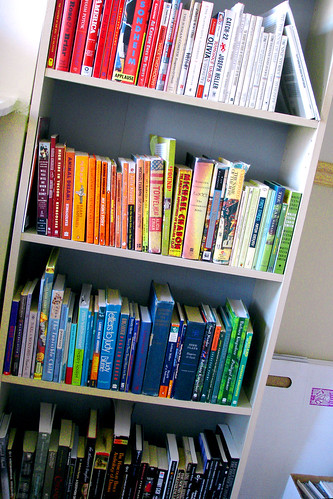
Fall 2010
In our PR Writing classes (PRCA 3330 at Georgia Southern University and COMM 4333 at Southeastern University), we’ll all blog about the same general topic each week during the semester. Your TOWs of 300 words or longer are due (should be posted on your own blog) by Saturday at 11:59 p.m. at the end of each week.
If a week has more than one topic listed, choose one of the available topics on those weeks.
Every time you refer to a website or another blog, be sure to hyperlink to the post. And consider inserting graphics or videos to add visual interest for your readers.
If you are unsure how to get started writing these TOWs, many times you can use this three-pronged approach:
- What did you learn?
- What surprised you?
- What do you want to know more about?
WEEK ONE
- Which types of social media you currently participate in (such as blogging, podcasting, social networking, etc.), which platforms you use, and why. [NOTE: Since you are creating your blog after after Week One, you will go back and add this post in.]
WEEK TWO
- Visit Mignon Fogarty’s Grammar Girl’s website. Either read one of her blog posts or listen to one of her podcasts on an area of grammar that is troublesome to you. Write about what you learned (using the three-pronged approach described toward the top of this blog post.)
WEEK THREE
- Why are comments such an integral part of blogs? What advice would you offer on writing effective blog comments?
WEEK FOUR
- Last week, you took the NewsU Cleaning Your Copy course. There were four main topics in this course: Grammar, AP Style, Punctuation and Spelling. Using the three-pronged approach described at the top of this post, describe your reactions to this course. Remember to include a hyperlink to the course, too.
WEEK FIVE
- Chapter 3 in your Public Relations Writing and Media Techniques book discusses ways that public relations practitioners can avoid legal hassles. One of these ways is to avoid plagiarism. Based on what you read in the chapter and additional research you will do online, what are some of the best practices (tips & tricks) for avoiding plagiarism in your writing?
WEEK SIX
- What makes a story newsworthy?
WEEK SEVEN
- One Week of Twitter [Note: You will do the One Week of Twitter assignment during Week Six, and then write about it before the end of Week Seven.]
WEEK EIGHT
- Last week, you took the NewsU The Lead Lab course. Using the three-pronged approach described at the top of this post, describe your reactions to this course. Remember to include a hyperlink to the course, too.
WEEK NINE
- Create a profile at PR OpenMic, a social network developed by Auburn University’s Robert French. Connect with me there as a friend so that I know you have joined. Then for your topic of the week, describe what PR OpenMic has to offer to PR students and recent grads. Be sure to discuss at least three or four things you encounter at the site, and provide hyperlinks to the specific areas in the site for your readers.
WEEK TEN
- In WordPress, go into your Dashboard and take a look at your stats. What kinds of things does the Site Stats page tell you? How would PR practitioners benefit for monitoring their own or their company’s blog?
WEEK ELEVEN
- Address several of the following questions about infographics. What are they? How could one be useful in a story for your client? How do you go about creating one? Create one if you can, and embed it in your blog post this week.
WEEK 12
- Listen to at least one hour of PR/marketing podcasts (such as For Immediate Release, Inside PR, The Creative Career, Coming Up PR, Trafcom News or Marketing Over Coffee). Briefly summarize what you heard. Discuss how listening to PR podcasts can benefit PR students or new PR practitioners. Be sure to include a hyperlink to the podcast’s website/blog. (Optional: Also, write a short review of the podcast at iTunes.)
WEEK 13
- Working either alone or in a group of no more than three, create a list of at least 10 ways that PR people can sometimes drive journalists crazy. After each item on the list, indicate what the PR person could/should do instead. Hyperlink to sources as needed. (If you are working with others, each of you should post to his/her own blog, and note where else it is crossposted and who the co-authors are.)
WEEK 14
- During Week 14, you will take the Five Steps to MultiMedia Storytelling course at News University. Using the three-pronged approach described at the top of this post, describe your reactions to this course. Remember to include a hyperlink to the course, too.
WEEK 15 (Optional)
- Just what is a “Social Media News Release”? When should a PR practitioner use a SMNR rather than (or perhaps in addition to) a “regular” news release? Be sure to include links to at least three websites/blogs that discuss SMNRs.
WEEK 16 (Optional)
- What advice would you offer PR students who are new to blogging? Come up with your own Top 10 list.

 As our semester begins at Georgia Southern, students are asking me questions via e-mail about our online classes. Rather than responding individually (so only one student can benefit), I’ve created a list of FAQs so that all can benefit.
As our semester begins at Georgia Southern, students are asking me questions via e-mail about our online classes. Rather than responding individually (so only one student can benefit), I’ve created a list of FAQs so that all can benefit.





 For fall semester’s PR Writing courses that I’m teaching for Southeastern University & Georgia Southern University, I am again augmenting my own content and
For fall semester’s PR Writing courses that I’m teaching for Southeastern University & Georgia Southern University, I am again augmenting my own content and 